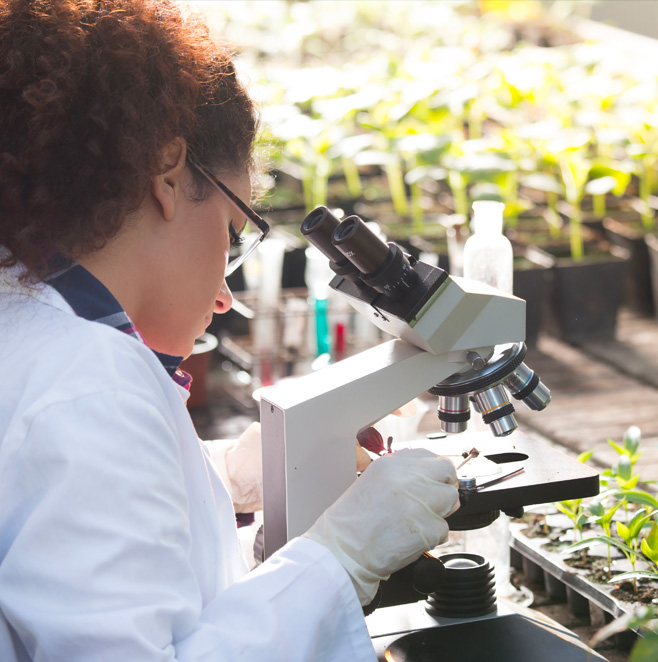Medical cannabis strains have unique characteristics that make them useful in different treatment contexts. The main cannabis strain cultivars available in Australia are Sativa, Indica, and hybrids of these. Knowing about the different strains of medical cannabis may help doctors make more informed decisions about personalised healthcare for their patients.
What is a medical cannabis strain?
A medical cannabis strain is a specific variety of the cannabis plant that exhibits distinct characteristics. This includes appearance, aroma, and chemical composition. These unique traits contribute to the strain’s individual chemical profile and potential effects. Strains are cultivated to emphasise particular qualities, such as flavour profiles, cannabinoid content, and terpene composition. The diversity of medical cannabis strains allows doctors to tailor treatment to their patients, as each strain may offer a nuanced combination of effects.

What types of medical cannabis strains are there in Australia?
Sativa, Indica, and hybrids of these two subspecies are distinct categories of cannabis plants available in Australia. Although they are all cultivars of the cannabis plant, they differ greatly from one another. Each subspecies has its own traits and characteristics which may benefit patients experiencing a range of medical conditions. Within each of these broader categories are a range of specific strains which are related to each other. Registered Healthcare Professionals can choose from hundreds of strain types within these subspecies, giving them the ability to prescribe certain strains of medical cannabis to suit individual patient needs.
Sativa
Sativa is a subspecies of the cannabis plant known for its distinct characteristics and effects. The sativa plant is less dense in form and characterised by tall, slender structures with narrow leaves that are native to warmer parts of the world, being Eastern Asia and Central and South America. Sativa strains are typically associated with energising and uplifting properties.
Indica
Indica, another subspecies of the cannabis plant, exhibits distinctive traits that set it apart. Recognised for its compact, bushy appearance, indica plants typically have broader leaves and a shorter structure. Native to Afghanistan, India, Pakistan and Turkey, they’re valued for their resilience and adaptability. Indica strains often contain varying ratios of cannabinoids and terpenes, contributing to a diverse array of aromas and flavours. Indica strains are typically associated with relaxation and sedation.
Hybrid strains
Hybrid stain options combine equal amounts of sativa and indica strains, that are anecdotally described as having a balance effect of both subspecies Sativa and Indica.
It is important to note that over the history of growing cannabis, strains were collected from their native habitats and brought to Europe and North America, where they were crossbred with one another to explore the plant’s potential. This process of hybridisation has led to the thousands of cannabis varieties globally and means there are limited pure Sativa or Indica strains.
This means that even though a strain may be labelled as a ‘Sativa’ (and not considered a hybrid), it will still likely be a sativa dominant hybrid strain as there are few species that have not gone through some hybrid process. The same goes for Indica-labelled products.

Help is at Hand
Get free information and assistance quickly by filling out the contact form below.
What phytochemicals do medical cannabis strains contain?
Medical cannabis strains contain phytochemicals like cannabinoids, terpenes, and flavonoids. These phytochemicals impact the overall pharmacological effect of medical cannabis. Together, they shape the qualities and therapeutic benefits of medical cannabis strains.

Cannabinoids
Cannabinoids, the bioactive compounds in cannabis, play a pivotal role in its therapeutic potential. There are over 100 different chemical entities within the cannabis plant, with more than 60 being cannabinoid compounds. Major compounds such as the delta-9-tetrahydrocannabinol (THC) and cannabidiol (CBD) are the most researched. THC is known for its psychoactive properties, while CBD is non-psychoactive. These compounds interact with the endocannabinoid system to produce specific effects on the human body.
Terpenes
Terpenes are naturally occurring, aromatic organic compounds produced in glandular trichomes found in medical cannabis. They contribute to the plant’s diverse scent profiles and potential therapeutic benefits. These organic hydrocarbons are not exclusive to cannabis, existing in various plants and fruits. They fulfil unique ecological roles for plants in protection from predators, attraction of pollinators, and a myriad of other roles. There are over 100 terpenes in cannabis, and these compounds are responsible for giving cannabis strains their distinct smells and flavours and may also contribute to some therapeutic effects. Common terpenes include myrcene, pinene, and limonene. Beyond their impact on smell and taste, terpenes may interact with cannabinoids, influencing the overall pharmacological effects of medical cannabis through the entourage effect.
It’s important to note that terpenes volatilize at various temperatures which can alter the smell, taste and effects of the cannabis. Terpenes can also evaporate off cannabis in a way that phytocannabinoids like THC and CBD do not. Meaning, if it gets too hot during consumption, terpenes may simply disappear.
The boiling point of a terpene is the temperature at which it completely dissipates. This is much higher than the point at which terpenes begin to evaporate, yet still slightly lower than at which many phytocannabinoids burn off.
Flavonoids
Flavonoids, another class of phytochemicals in medical cannabis, contribute to the plant’s colour, flavour, and potential health benefits. These naturally occurring compounds, common in fruits and vegetables, offer antioxidant and anti-inflammatory properties. Certain flavonoids, like quercetin and cannaflavin A and B, exhibit promising therapeutic potential.
Which medical cannabis strains are legal?
In 2016, the cultivation, production, and medical use of cannabis was legalised at the federal level. Although each state and territory has its own legislation, which may lead to slight differences in accessibility and regulations regarding the amount a patient can be prescribed, medical strains of cannabis flower should all be legally accessible regardless of where a patient resides. Access to cannabis flower strains as a medication can only be facilitated by an Australian-licensed medical practitioner, possessing the necessary qualifications and expertise relevant to the patient’s medical condition. Following an assessment of the patient’s specific requirements, the physician will determine the suitability of treatment for their condition. Individuals or companies are not legally permitted to grow or purchase cannabis strains or seeds for cannabis flowers without the proper license from the Office of Drug Control (ODC).

Which product types are medical cannabis strains used for?
Medical cannabis products utilise sativa, indica or hybrid-dominant strains to harness the unique effects of each cultivar. Sativa strains are often preferred, while Indica strains are commonly chosen for use in the evening. Registered Medical Practitioners can prescribe products with specific cannabis strains to tailor the treatment to the individual patient requirements. Below are some examples of the different product types available.
Oils
Cannabis oils typically use a blend of sativa and indica-dominant cannabis strains. This means cannabis oil medicines can be tailored for both daytime and nighttime use, depending on the prescription. Hybrid strains are also found in oils to provide balance between the energising effects of sativa and the soothing effects of indica. Cannabis oils are commonly prescribed as they allow for very controlled dosing and have a longer duration of therapeutic benefit than when inhaling medical cannabis. Cannabis oil can be also swallowed or taken sublingually by holding it underneath the tongue before swallowing – which allows the tiny blood vessels in the mouth to absorb it more quickly.
Vaporised flower and inhalations
Vaporised medical cannabis is often prescribed by Registered Medical Professionals, due to the short onset of therapeutic availability. Practitioners can also utilise a specific strain, which can be prescribed to patients for certain therapeutic goals. They mainly use sativa, indica-dominant or hybrid strains depending on the desired effects and this flexibility in formulations caters to a diverse range of patient needs.
Edibles
Like cannabis oils, edible products typically use a blend of sativa and indica strains. Edibles work in a similar way to oils, however can only be swallowed so the body needs to absorb the medical cannabis via the digestive system before the liver can break it down even further. Edibles are commonly prescribed for their convenience (portability) and flavours, often masking the taste of cannabis.
Contact Us For Free Assistance
"*" indicates required fields
Additional Information on Cannabis Strains
Learn more about the legal landscape surrounding medical cannabis strains in Australia, including regulations governing cultivation, prescription, and usage for therapeutic purposes.
The Legality of Cannabis StrainsLearn about the diverse effects of medical cannabis strains, from energizing sativas to relaxing indicas, and how they can be tailored for Australian patients’ unique therapeutic needs.
Effects of Cannabis StrainsLearn about the intricacies of the cannabis plant, from its rich medical history to the distinct characteristics of indica, sativa, and hybrid strains cultivated in Australia for therapeutic purposes
Cannabis PlantLearn about the diverse world of cannabis strains and their applications in various medical cannabis products, from oils and edibles to vaporised flowers and topicals tailored for Australian patients.
Cannabis Strains and Product TypesLearn about how the cannabis plant is made up of many chemical compounds that contribute to the look, flavour, scent, and effect of the plant.
Chemical Makeup of CannabisLearn about how cannabis compounds work together synergistically to potentially enhance therapeutic effects, including the interactions between cannabinoids, terpenes, and flavonoids in medical cannabis
The Entourage EffectLearn how these diverse plant compounds affect cannabis color and flavor, contribute to the entourage effect, and interact with other plant chemicals to influence potential therapeutic properties
FlavonoidsExplore the distinctive characteristics of Cannabis indica strains – from their compact, bushy structure to their chemical composition and potential therapeutic applications across various medical cannabis products
Medical Cannabis Strains: IndicaDiscover the characteristics of Cannabis sativa strains – from their tall, slender growth pattern to their unique chemical profile and potential energizing effects in various medical applications.
Medical Cannabis Strains: SativaUnderstand terpenes, aromatic compounds found in cannabis and other plants that contribute to smell and taste, their interaction with the body, and their role in the entourage effect with cannabinoids
TerpenesLearn about CBG, the ‘mother cannabinoid’ that serves as a precursor to other cannabis compounds, its non-psychoactive properties, potential therapeutic applications, and how it compares to CBD, CBN, and CBC
Medical Cannabis Cannabinoids: Cannabigerol (CBG)Explore the key compounds in cannabis that interact with the body’s endocannabinoid system, including natural and synthetic varieties, their chemical structures, and how they function in medical applications
CannabinoidsExplore CBN, a minor cannabinoid formed through THC degradation, its mild psychoactive properties, potential sedative effects, and how it interacts with other cannabinoids through the entourage effect
Medical Cannabis Cannabinoids: Cannabinol (CBN)